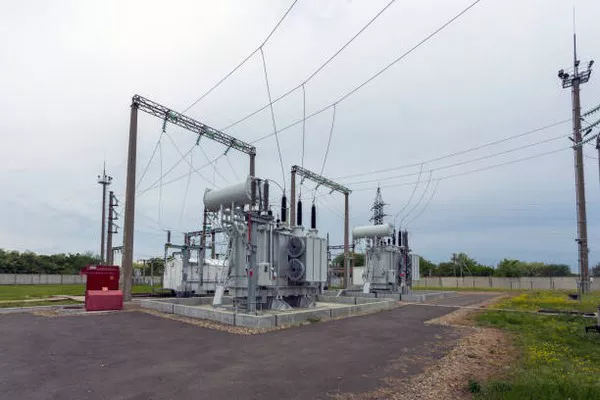Electricity plays a fundamental role in modern society, powering our homes, industries, and technologies. Yet, the journey of electricity from its generation to its utilization often requires various transformations and optimizations. One crucial device in this process is the electrical transformer. In this article, we will delve into what electrical transformers transform, their workings, types, applications, and significance in the realm of electrical engineering.
What is an Electrical Transformer?
An electrical transformer is a static device used to transfer electrical energy between two or more circuits through electromagnetic induction. Its primary purpose is to change the voltage level of an alternating current (AC) system, either stepping it up for long-distance transmission or stepping it down for safer distribution and utilization.
The basic structure of a transformer consists of two coils of wire—an input coil (primary winding) and an output coil (secondary winding)—linked together by a magnetic core. When an alternating current flows through the primary winding, it creates a changing magnetic field in the core, which induces a voltage in the secondary winding.
What Does an Electrical Transformer Transform?
The primary function of an electrical transformer is to transform voltage levels while keeping the frequency of the electrical power supply unchanged. Voltage transformation is accomplished based on the ratio of turns in the primary and secondary windings. By altering the number of turns in each coil, transformers can step up (increase) or step down (decrease) the voltage level of AC electricity.
Working Principle of Transformers
The working principle of a transformer revolves around electromagnetic induction. When an alternating current flows through the primary winding, it generates an alternating magnetic field around the coil. This changing magnetic field induces a voltage in the secondary winding through mutual induction.
The key equations governing transformer operation are based on Faraday’s law of electromagnetic induction:
Voltage Transformation Ratio: The ratio of the number of turns in the primary winding (N1) to the number of turns in the secondary winding (N2) determines the voltage transformation ratio. This ratio (𝑎a) is given by: 𝑎=N1/N2
Voltage and Current Relationship: The voltage ratio (𝑎a) is equal to the ratio of the primary voltage (V1) to the secondary voltage (V2), and similarly, the ratio of the primary current (I1) to the secondary current (I2): 𝑎=V1/V12=I1/I2
Types of Transformers
Transformers come in various types and configurations, tailored for specific applications:
Step-Up Transformers: These transformers increase the voltage level from the primary winding to the secondary winding, allowing efficient long-distance power transmission with reduced current losses.
Step-Down Transformers: Conversely, step-down transformers decrease the voltage level for safer distribution and utilization within homes and industries.
Isolation Transformers: Isolation transformers are used to provide electrical isolation between circuits, preventing the flow of direct current (DC) and reducing noise and interference.
Auto Transformers: These transformers have a single winding with two taps and are used for voltage adjustments in small increments.
Applications of Transformers
Transformers are integral to electrical systems across various sectors:
Power Transmission: They facilitate the efficient transmission of electricity over long distances by stepping up the voltage, thereby reducing energy losses during transmission.
Distribution Networks: Step-down transformers are essential for reducing voltage levels to safer levels for consumer use.
Industrial Applications: Transformers are used in various industrial processes, including powering machinery, providing control voltages, and enabling efficient use of electric motors.
Electronics and Telecommunications: They are used in power supplies for electronic devices and in telecommunications equipment for signal conditioning and isolation.
Significance of Electrical Transformers
The importance of electrical transformers in the modern world cannot be overstated:
Efficiency in Energy Transmission: Transformers enable the efficient transmission of electricity across vast distances, reducing energy losses and ensuring reliable power supply.
Safety and Reliability: They play a crucial role in maintaining safe voltage levels for consumer use, protecting electrical equipment and preventing hazards such as electrical fires.
Grid Stability: Transformers contribute to the stability of electrical grids by balancing voltage levels and facilitating the integration of renewable energy sources.
Technological Advancements: The development of advanced transformer technologies, such as smart transformers and superconducting transformers, promises even greater efficiency and reliability in the future.
Future Trends and Innovations
The field of electrical transformers continues to evolve with advancements in materials, design, and technology:
Smart Transformers: These transformers incorporate digital monitoring and control systems, enabling real-time monitoring of power flow and condition-based maintenance.
Superconducting Transformers: Research is ongoing into the use of superconducting materials to reduce losses and improve the efficiency of transformers.
Integration with Renewable Energy: Transformers are being adapted to accommodate the integration of renewable energy sources into the grid, enabling smoother and more efficient power distribution.
See Also What Is The Red Transformer Called? A Comprehensive Guide
Conclusion
In summary, electrical transformers play a vital role in the generation, transmission, and utilization of electrical power. By transforming voltage levels efficiently and safely, transformers enable the widespread distribution of electricity to homes, industries, and infrastructure. As technology advances, transformers will continue to evolve, supporting the transition towards a more sustainable and interconnected energy future.


